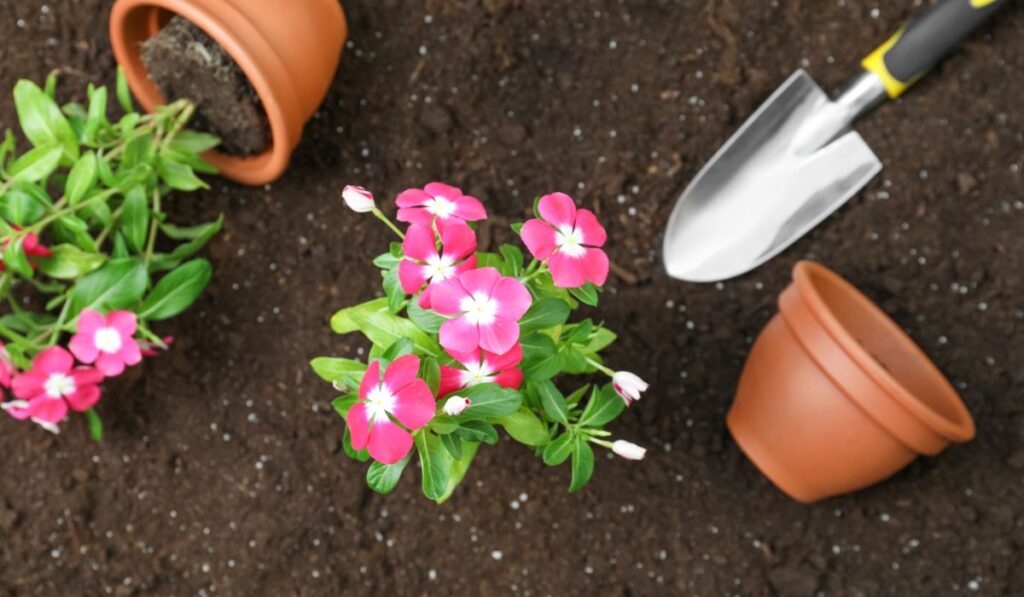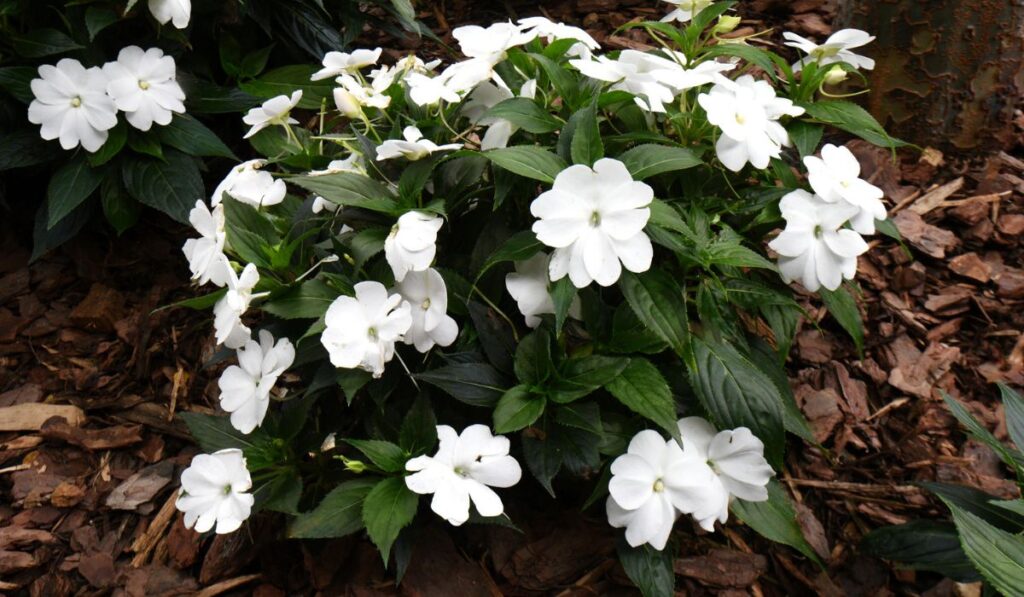If you’re looking for flowers that bloom from spring to summer and grow in hot weather, then Vinca is ideal. Vinca grows fast and can be planted in soil where many other flowers don’t grow. So, how do you grow Vinca, and is it worth planting?
There are many types of Vinca with a wide range of colors. You’ll have to plant Vinca in spring because they need warmer temperatures, full sun, and dry or sandy soil with proper drainage for optimal growth. All types of Vinca are highly resistant to plant diseases.
Let’s discuss what you need to do when planting Vinca, how to ensure they grow optimally, and which flowers to plant with them.
When is the Best Time of Year to Plant Vinca?

Vinca (example on Amazon) is an annual perennial and is native to Madagascar. It’s a tropical plant that grows in sunny locations and thrives in heat. So, if you want to enjoy beautiful, vibrant, and colorful blossoms from summer to fall, you’ll have to plant Annual Vinca in spring.
Vinca plants bloom from June to early winter. However, Vinca can be planted in some areas as late as April or May.
Vinca plants can withstand diverse weather conditions, but the only climate unsuitable for these flowers is severe cold climates, especially areas with heavy snow and frost. So if you’re living in a USDA zone with extreme cold, you don’t have to hurry to plant Vinca in early spring.
The plants may not grow properly if you plant Vinca in early spring after a cold winter. Before planting Vinca seedlings, you’ll need to wait for the warm summer breezes to replace the cool winter winds.
Annual Vinca can tolerate drought or even grow in dry and sandy soils. Just ensure the temperature is warm enough for the plants to grow correctly and that they are planted in well-drained soil.
What Type of Soil is Best for Vinca?
Vinca needs soil with good drainage and high organic nutrient content. You can add organic compost or fertilizer if your soil is poor.
Vinca is among the most popular summer flowering plants because it can tolerate high temperatures and drought. It also grows well in dry and sandy soil. Regular vinca and vinca minor can be planted outside, indoors, or in containers.
Avoid planting Vinca in wet soil, as this will hinder its growth. However, if you’ve planted it in a climate with heavy rainfall, you must ensure that the soil doesn’t retain water and drains properly. If there are water puddles near or around the flower bedding, it will damage the roots of the plant.
Many gardeners also make the mistake of watering these plants too often, even in the rainy season. In regular sunny weather, you only need to water the plant once a week, but it’s best not to water them in the rainy season.
If the soil is sandy or even ordinary garden soil, you don’t have to worry about plant diseases since Vinca plants rarely get infested with pests or plant diseases. However, if the soil is too wet, the roots may get affected by fungus, and the plant will slowly die.
If pests are attacking your Vinca flowers, you can use pesticides but be careful not to use these chemicals excessively. If there’s no threat to your plantation or flower bedding, there is no need to add chemicals to the soil, especially if you have kids or pets.
Vinca grows well in ordinary soil and much faster with regular water and full sunlight.
What Flowers Pair Well with Vinca?
If you’re thinking of planting Vinca in your flower garden, you should consider which flowers pair well. Fortunately, Vinca pairs well with multiple flowers, including:
- Mediterranean Deep Rose: These are usually planted in hanging baskets in dry and warm weather. The petals bloom with rich red, growing in a similar climate to Vinca.
- Pacifica Series: This series includes early bloomers like Pacifica Burgundy Halo and Pacifica Punch. While the former has a reddish pink flower with a white center, the latter has pink flower petals.
- Soiree Double White: These grow from spring to fall with double flowers. They have dark green leaves that complement the colors of the petals, and it does excellent with Vinca plants.
- Cool Series or Heat Series: The Cool series have flowers that grow in cooler temperatures, while the Heat series have flowers that bloom in a warmer atmosphere. Both grow well with Vinca.
Vinca is great for ground cover because it grows rather quickly. These plants can grow to a maximum height of 8 inches and a maximum width of 25 inches. They have five petals that encircle the center and give you an impression of a wheel.
The colors range from purple, red, yellow, white, lavender, scarlet, and red. So, if you’re thinking of planting Vinca with other flowers, choose ones that complement the Vinca flower’s colors. You only have to be careful that Vinca also spreads, so you must plant these flowers a few inches apart.
Also, when planting other flowers with Vinca, make sure they aren’t vine-type flowers, or they will compete for space and nutrients. Also, try to plant flowers that blossom in the summer and spring to complement the blossoming time of Vinca plants.
Does Vinca Prefer Full or Partial Sun?

Vinca plants can grow in both full and partial sun, but if you want a perfect and vibrant bloom plant them in an area with direct sunlight.
If you are growing these plants outside in a garden bed, choose an area with direct sunlight. However, if you’re growing them in pots, hanging baskets, and containers, you have to ensure they get enough daylight hours in direct sun, even if the area has partial sunlight in the morning and evening.
These plants can also grow in partial shade, but if the area has too much shade, the Vinca plants will have stunted growth. Shady areas also retain moisture for longer, which may increase the risk of fungal diseases.
Some Vinca plants may require more or less direct sunlight, so you need to read the instructions on the seed packet or plant tag to avoid planting them in the wrong area.
Since Vinca plants grow well in heat and direct sun, they are considered low-maintenance. Since you don’t have to put in a lot of work to prepare the soil or water them regularly, they are ideal for busy gardeners.
